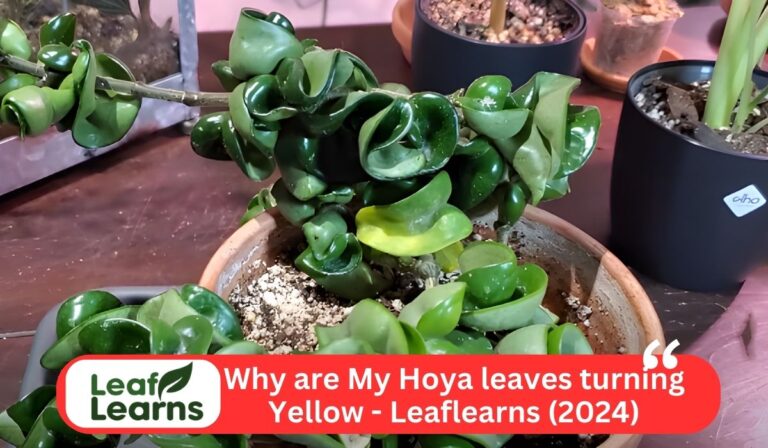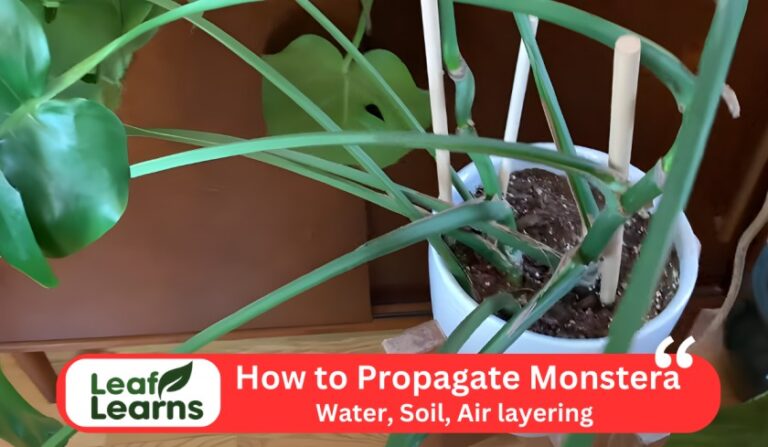24 Best Indoor Plants for Winter: Make Home Beautiful in Winter
When the conditions outside become gloomy, indoor plants for winter play an essential role in keeping an interesting and healthy living environment. These environmentally friendly creatures not only give a sense of nature inside, but they serve as natural air filters, which is particularly essential during the colder months when doors are tightly closed.
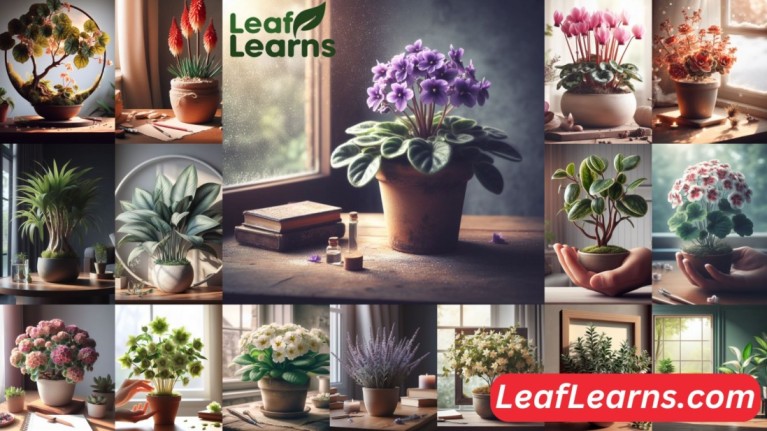
The right potting size ensures that the plants have sufficient space for root development, improving their general health. Select a perfect location for your indoor plants with regard to light.
In order to ensure that they receive the energy needed for photosynthesis when winter’s shorter days reduce natural light, be sure to place them near an area of indirect sunlight or, if necessary, make a purchase of grow lights. Winter time indoor plant cultivation Improves attitude, improves air quality, and offers a rewarding activity that is simple to perform in the peace and quiet of your own home.
Contents
- 1 Chinese Evergreen (Aglaonema)
- 2 Jade Plant (Crassula ovata)
- 3 Dracaena (Dracaena spp.)
- 4 African Violet (Saintpaulia)
- 5 Norfolk Island Pine (Araucaria heterophylla)
- 6 Lavender (Lavandula)
- 7 Kalanchoe (Kalanchoe blossfeldiana)
- 8 Wintergreen (Gaultheria procumbens)
- 9 Begonia (Begonia spp.)
- 10 Geranium (Pelargonium)
- 11 Schefflera (Schefflera arboricola)
- 12 Cyclamen (Cyclamen)
- 13 Oxalis (Oxalis spp.)
- 14 Polka Dot Plant (Hypoestes phyllostachya)
- 15 Baby Rubber Plant (Peperomia obtusifolia)
- 16 Calathea (Calathea spp.)
- 17 Prayer Plant (Maranta leuconeura)
- 18 Christmas Kalanchoe (Kalanchoe blossfeldiana)
- 19 Winter Jasmine (Jasminum nudiflorum)
- 20 Red Hot Poker (Kniphofia)
- 21 Hellebore (Helleborus)
- 22 Primrose (Primula)
- 23 Peace Lily (Spathiphyllum):
- 24 Croton
- 25 Guideline for Indoor Plants for Winter
- 26 Indoor Plant Care in Diverse Climates: Pakistan to Canada
- 27 FAQs
Chinese Evergreen (Aglaonema)
Chinese Evergreen, sometimes referred to as Aglaonema technically, is a hardy indoor plant that is perfect for winter. It is a preferred option due to its endurance for low light and varying temperatures.
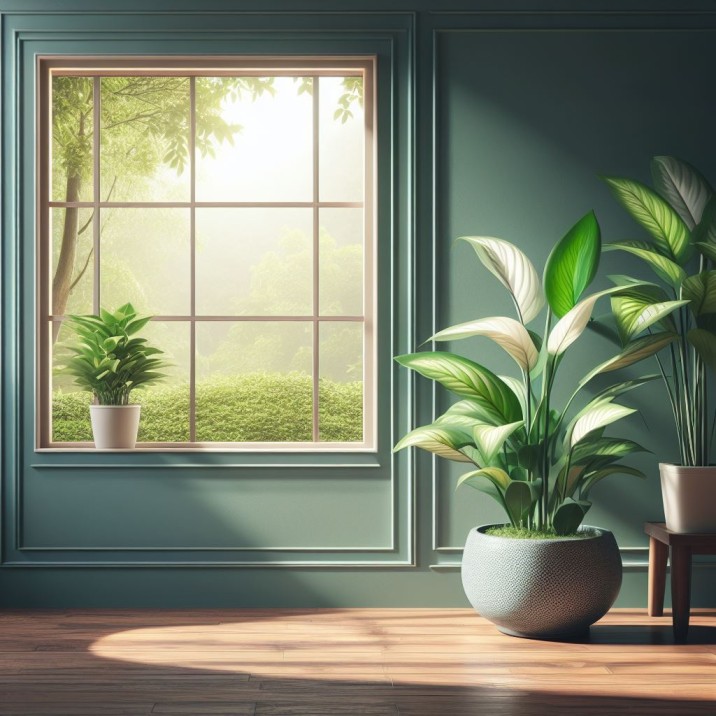
It is a native of Southeast Asia, where it thrives in low humidity. During the winter, it brings a rich, green presence into your house.
| Common Name | Chinese Evergreen |
| Scientific Name | Aglaonema |
| Origin | Southeast Asia |
| Temperature | 65-75°F (18-24°C) |
| Humidity | Moderate, 40-50% relative humidity |
Jade Plant (Crassula ovata)
The hardy, low-maintenance jade plant (Crassula ovata), commonly known as the money tree, is a good choice for winter landscaping.
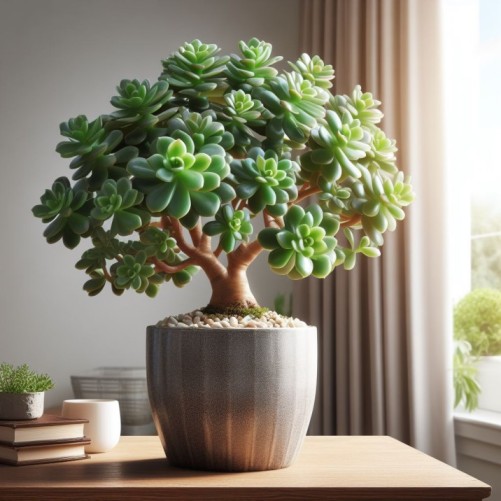
It is a South African native that can withstand chilly temperatures and thrives in arid environments. It’s a wonderful addition to your winter decor because of its distinctive design and little water needs.
| Common Name | Jade Plant (Money Tree) |
| Scientific Name | Crassula ovata |
| Origin | South Africa |
| Temperature | 50-75°F (10-24°C) |
| Humidity | Low, thrives in dry conditions |
Dracaena (Dracaena spp.)
A species of adaptable indoor plants known as dracaena is a great option for winter. These plants, which are indigenous to Africa, are hardy and versatile.
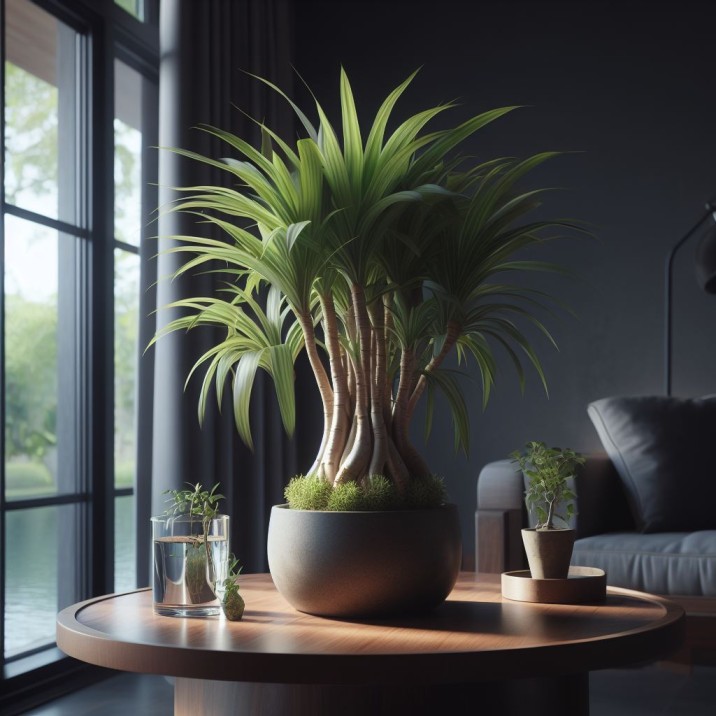
They are a popular choice for adding greenery throughout the colder months since they do well in moderate humidity and can withstand chilly indoor temperatures.
| Common Name | Dracaena |
| Scientific Name | Dracaena spp. |
| Origin | Africa |
| Temperature | 65-80°F (18-27°C) |
| Humidity | Moderate, 40-60% relative humidity |
African Violet (Saintpaulia)
Saintpaulia, often known as an African violet, is prized for its colorful, perennial blossoms. They need constant indoor temperatures and greater humidity levels because they are East African in origin.
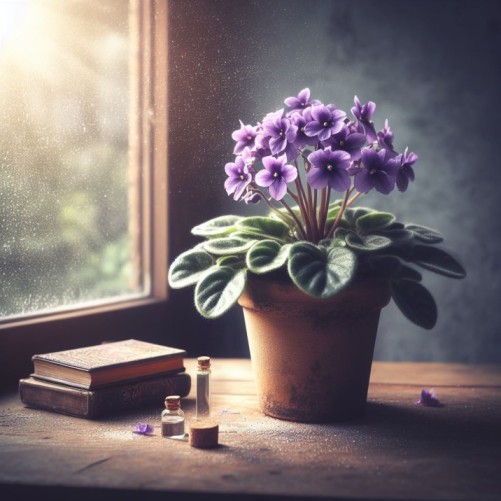
They are a prized option for winter because of their charm and propensity for thriving indoors.
| Common Name | African Violet |
| Scientific Name | Saintpaulia |
| Origin | East Africa |
| Temperature | 65-75°F (18-24°C) |
| Humidity | High, 60-80% relative humidity |
Norfolk Island Pine (Araucaria heterophylla)
The South Pacific is the native region of the Norfolk Island Pine, scientifically known as Araucaria heterophylla.

It enhances the beauty of your home and flourishes in the winter’s colder interior temperatures. It has an appealing coniferous look and requires little upkeep.
| Common Name | Norfolk Island Pine |
| Scientific Name | Araucaria heterophylla |
| Origin | South Pacific |
| Temperature | 50-70°F (10-21°C) |
| Humidity | Moderate, 40-60% humidity |
Lavender (Lavandula)
Lavandula, the scientific name for lavender, is a fragrant herb that does well inside in the winter. It’s a nice option with good tolerance at lower temps.

The Mediterranean plant lavender needs well-drained soil and might benefit from periodic trimming to promote strong growth.
| Common Name | Scientific Name | Origin | Temperature | Humidity |
| Lavender | Lavandula | Mediterranean | Moderate to cool | Low |
Kalanchoe (Kalanchoe blossfeldiana)
A succulent that does well in winter is Kalanchoe blossfeldiana, sometimes called Kalanchoe. It is a well-liked option because of its tolerance for chilly climates.
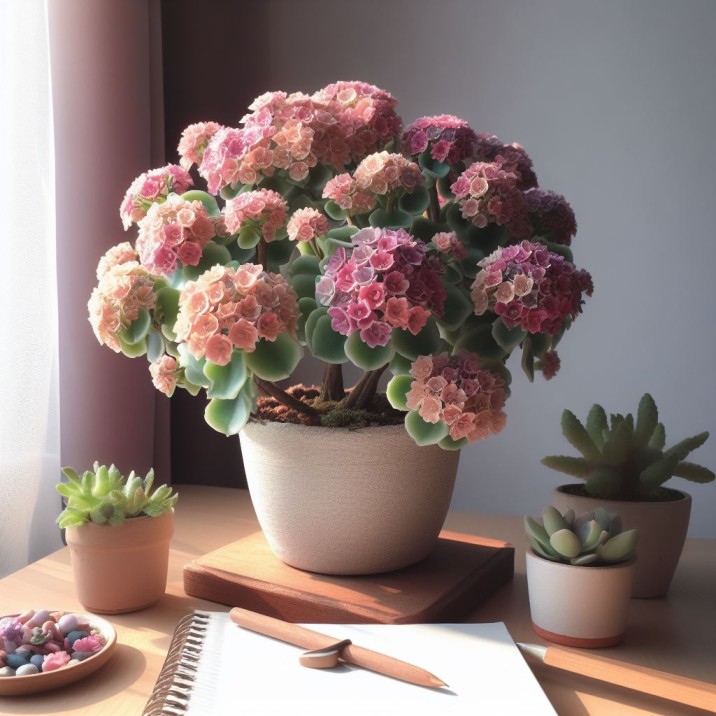
This plant, which is native to Madagascar, enjoys bright light and low humidity, making it an ideal indoor companion that blooms with colorful flowers throughout the winter.
| Common Name | Scientific Name | Origin | Temperature | Humidity |
| Kalanchoe | Kalanchoe blossfeldiana | Madagascar | Moderate to cool | Low |
Wintergreen (Gaultheria procumbens)
An evergreen that flourishes in the winter is called wintergreen, or Gaultheria procumbens. This tolerant to cold species comes from North America.
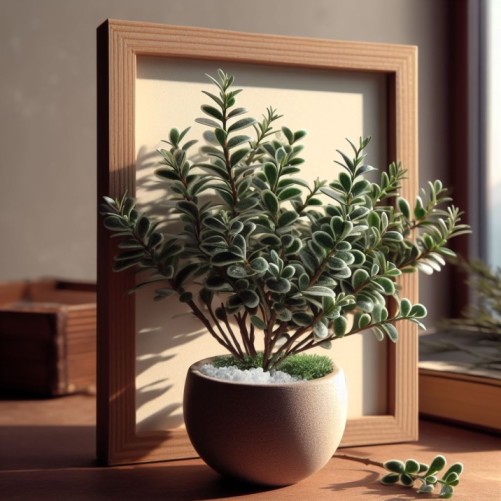
It is renowned for its durability in chilly climates and low humidity. Even in the winter, Wintergreen thrives from well-drained soil and consistent hydration.
| Common Name | Scientific Name | Origin | Temperature | Humidity |
| Wintergreen | Gaultheria procumbens | North America | Cold-tolerant | Low |
Begonia (Begonia spp.)
Begonia, a member of the genus Begonia, is an indoor plant that exhibits extraordinary adaptability to a wide range of environmental factors, including winter.
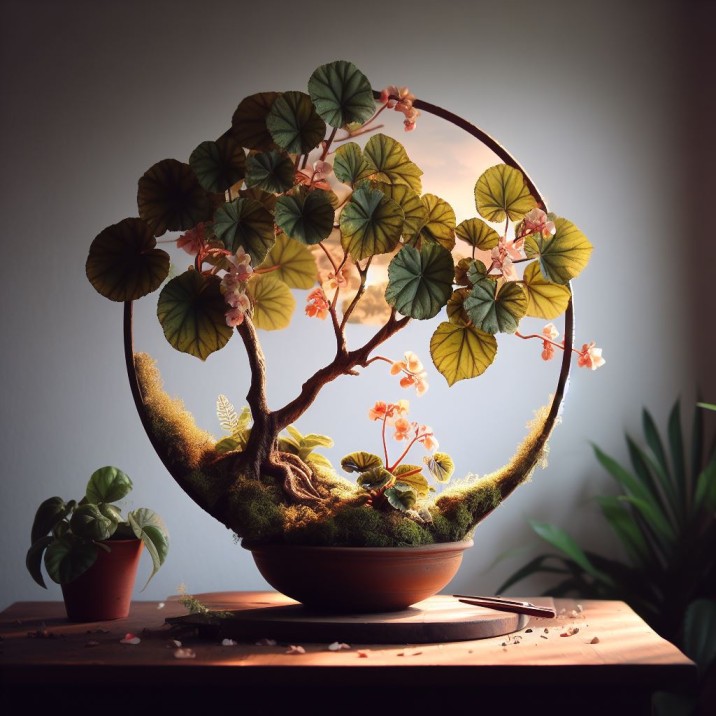
These plants are recognized for their versatility and come in many different kinds. Begonias need moderate temperatures and moderate humidity; they are native to tropical climates. They give your winter decorations a splash of color.
| Common Name | Scientific Name | Origin | Temperature | Humidity |
| Begonia | Begonia spp. | Tropical | Moderate | Moderate |
Geranium (Pelargonium)
Popular indoor plants with colorful blossoms that can withstand the colder winter months include geraniums. These South African native plants do well in well-drained soil and bright sunshine.
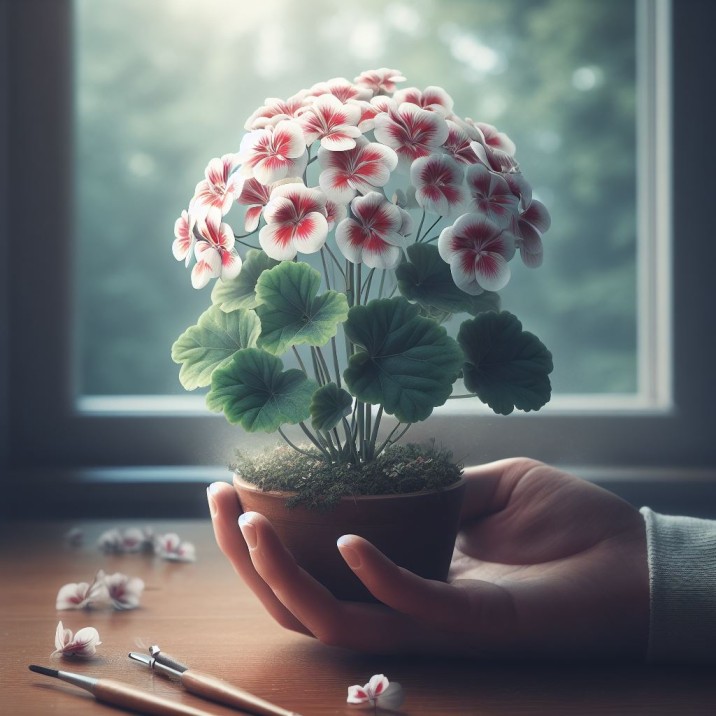
Although they require little care, frequent trimming and deadheading can promote abundant blooming. Through the removal of pollutants like formaldehyde, geraniums serve to enhance indoor air quality.
| Common Name | Geranium |
| Scientific Name | Pelargonium |
| Origin | South Africa |
| Temperature | 60-75°F (15-24°C) |
| Humidity | Moderate humidity levels |
Schefflera (Schefflera arboricola)
A resilient indoor plant is the schefflera, commonly called the umbrella tree. It is a Taiwanese native that tolerates a range of lighting conditions and does well in typical indoor temperatures.
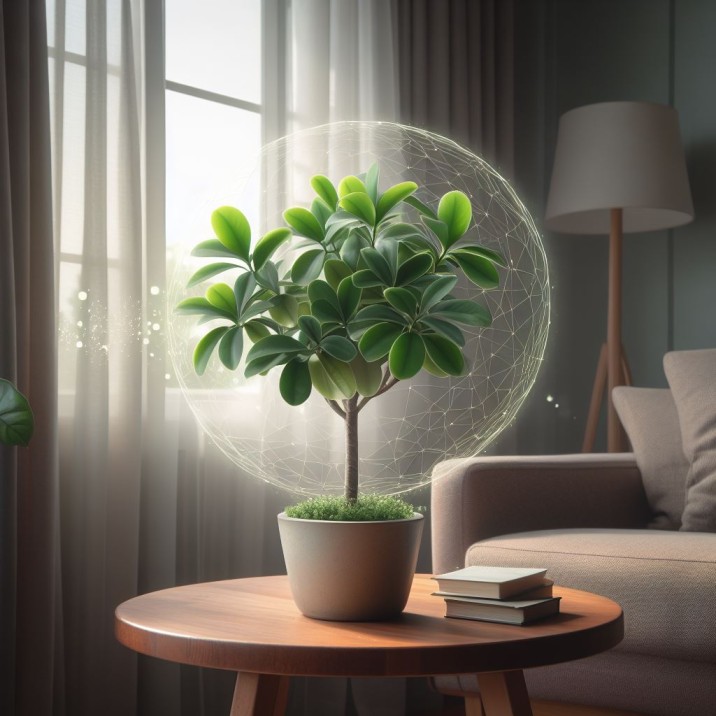
With little care, it may develop into a lovely, tall, bushy plant and is an excellent air cleaner.
| Common Name | Schefflera |
| Scientific Name | Schefflera arboricola |
| Origin | Taiwan |
| Temperature | 60-75°F (15-24°C) |
| Humidity | Moderate humidity levels |
Cyclamen (Cyclamen)
Originating in the Mediterranean, cyclamen is a good choice for indoor winter blossoms. It thrives in cold weather and has unusual up swept blooms and marbled leaves.
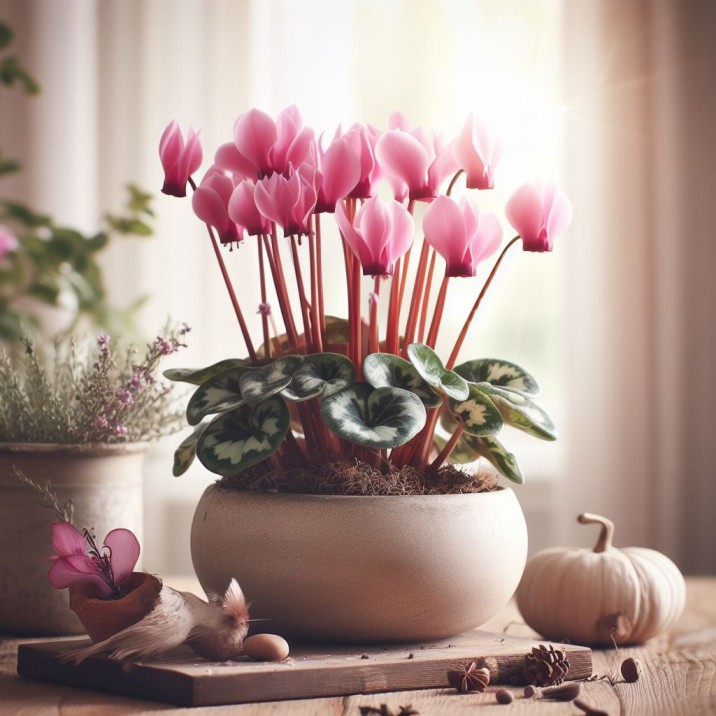
Its development depends on sufficient light and soil that drains properly, making it a wonderful addition to any indoor winter garden.
| Common Name | Cyclamen |
| Scientific Name | Cyclamen |
| Origin | Mediterranean region |
| Temperature | 50-60°F (10-15°C) |
| Humidity | Moderate humidity levels |
Oxalis (Oxalis spp.)
The Shamrock Plant, commonly known as oxalis, has distinctive leaves and exquisite blooms. These plants are indigenous to many different parts of the world and thrive well in enclosed spaces.
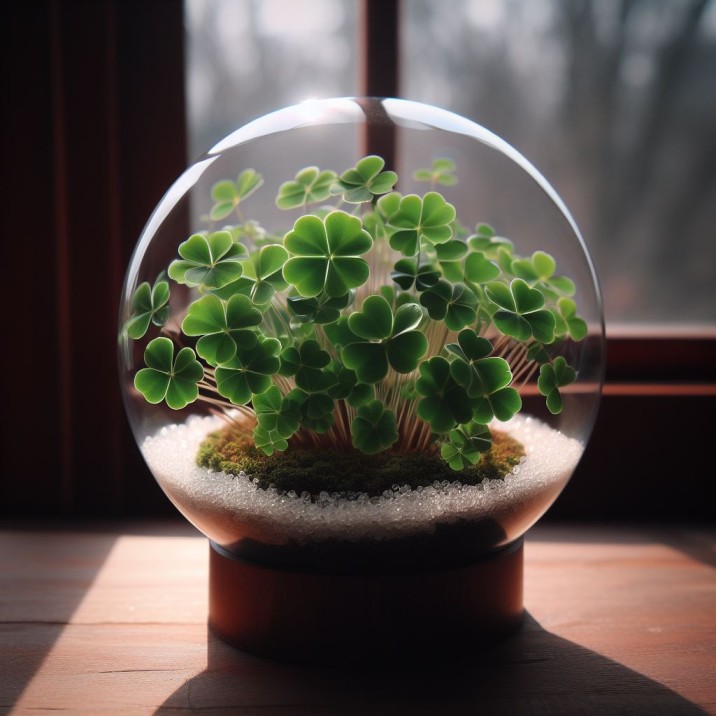
They are ideal for winter indoor gardening since they need just modest watering and thrive in chilly climates.
| Common Name | Oxalis |
| Scientific Name | Oxalis spp. |
| Origin | Various regions globally |
| Temperature | 50-75°F (10-24°C) |
| Humidity | Moderate humidity levels |
Polka Dot Plant (Hypoestes phyllostachya)
The bright, speckled leaves of Polka Dot Plants are loved. They thrive at typical indoor temperatures and strong, indirect light, being native to Madagascar.
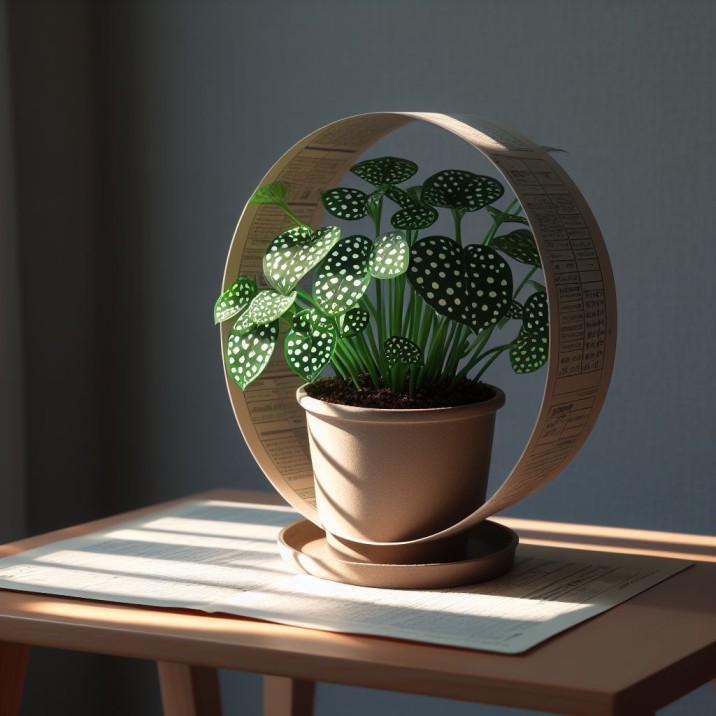
Their colorful foliage is very low-maintenance and gives a burst of color to indoor environments
| Common Name | Polka Dot Plant |
| Scientific Name | Hypoestes phyllostachya |
| Origin | Madagascar |
| Temperature | 65-75°F (18-24°C) |
| Humidity | Moderate humidity levels |
Baby Rubber Plant (Peperomia obtusifolia)
Peperomia obtusifolia, sometimes known as the Baby Rubber Plant, is a sturdy indoor alternative for the winter. Due of its hardiness, it may flourish in a variety of environments, even those with lower temperatures.
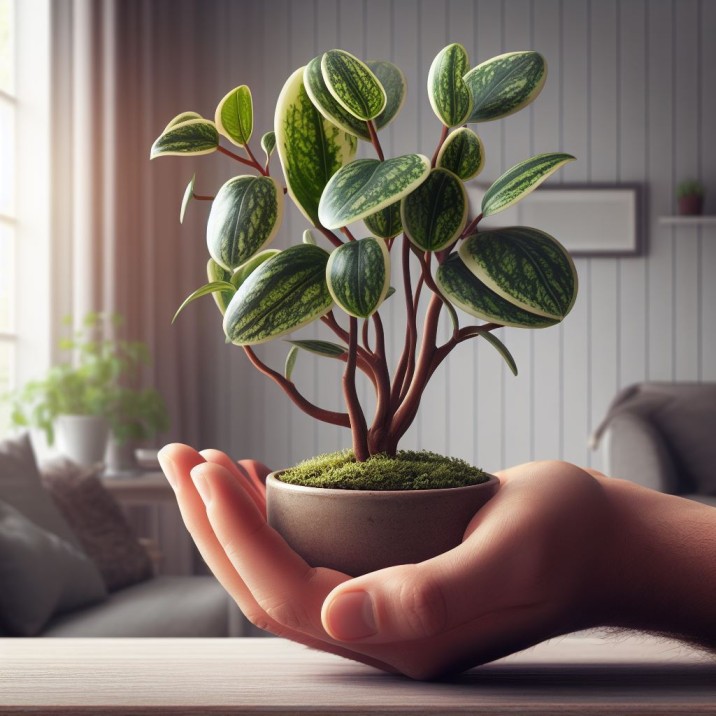
It is a great option for winter since it has a lush green presence and can handle dryer indoor air.
| Common Name | Scientific Name | Origin | Temperature | Humidity |
| Baby Rubber Plant | Peperomia obtusifolia | Central America | 65-80°F (18-27°C) | 40-50% |
Calathea (Calathea spp.)
Tropical-born Calathea plants are well-known for their eye-catching leaves. They do best in areas with high humidity and constant dampness.
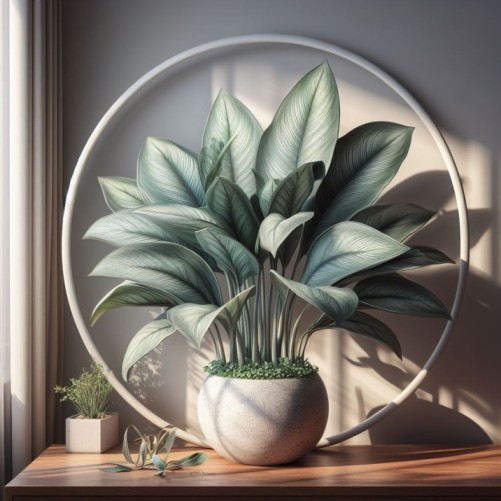
These gorgeous plants have advantages for air purification and can withstand lower indoor temperatures
| Common Name | Scientific Name | Origin | Temperature | Humidity |
| Calathea | Calathea spp. | Tropical regions | 65-75°F (18-24°C) | High |
Prayer Plant (Maranta leuconeura)
Maranta leuconeura, often known as the Prayer Plant, is a compelling option for indoor décor, especially in the winter.
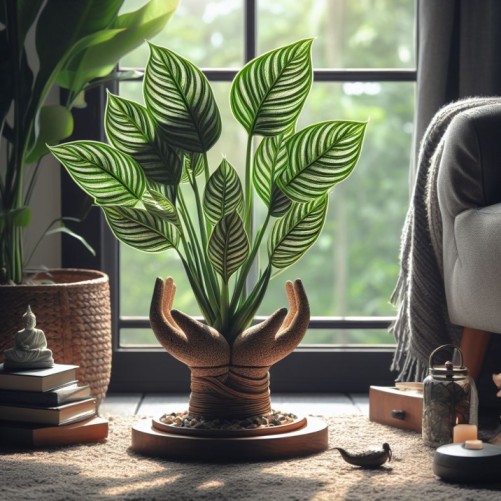
Its nighttime leaf-folding behavior, which resembles prayer hands, earned it the name. This flexible plant gives indoor areas a distinct vitality and thrives in reduced light levels.
| Common Name | Scientific Name | Origin | Temperature | Humidity |
| Prayer Plant | Maranta leuconeura | South America | 65-75°F (18-24°C) | Moderate |
Christmas Kalanchoe (Kalanchoe blossfeldiana)
With its colorful blossoms, the Christmas Kalanchoe is a festive selection for the wintertime. It thrives in colder temperatures and is particularly tolerant of dry indoor air.
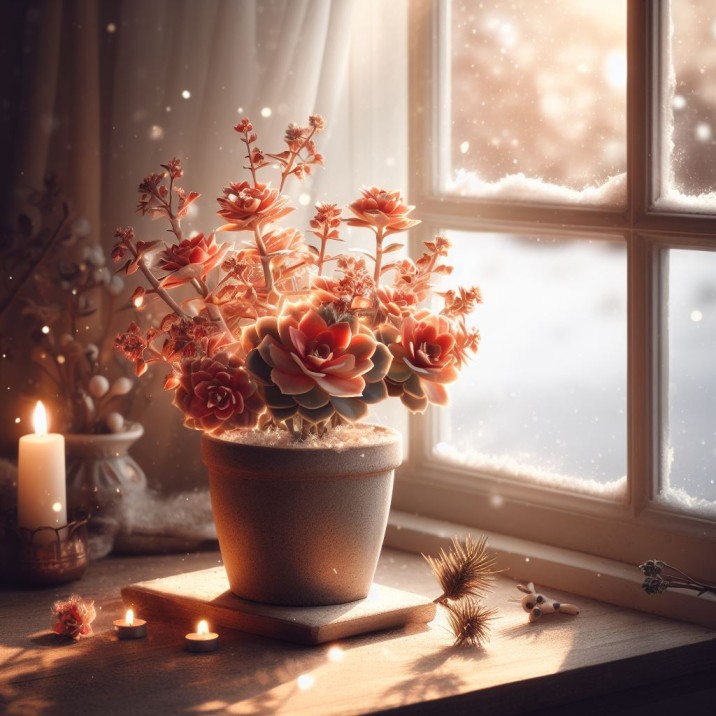
This succulent requires little maintenance and adds a splash of color to the winter landscape.
| Common Name | Scientific Name | Origin | Temperature | Humidity |
| Christmas Kalanchoe | Kalanchoe blossfeldiana | Madagascar | 60-85°F (15-29°C) | Moderate |
Winter Jasmine (Jasminum nudiflorum)
The hardy blooming plant known as winter jasmine, or Jasminum nudiflorum, is said to have originated in China. It is widely renowned for its ability to survive in cold climates and may grow well in winter gardens.
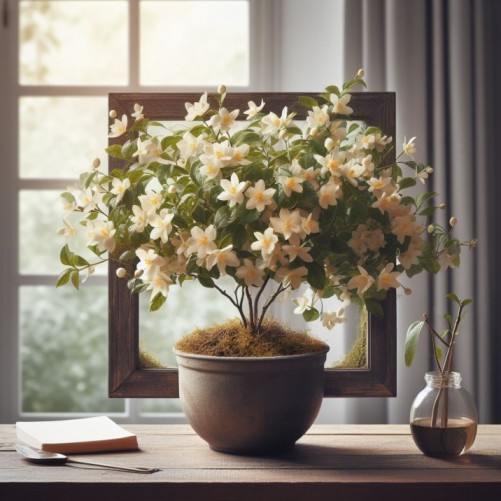
It is a crucial option for winter landscaping because of its bright yellow blossoms, which give a flash of color during the drabber months.
| Common Name | Scientific Name | Origin | Temperature | Humidity |
| Winter Jasmine | Jasminum nudiflorum | China | 0°F to 20°F (-18°C to -6°C) | Moderate |
Red Hot Poker (Kniphofia)
The beautiful perennial plant known as Red Hot Poker, or Kniphofia, comes originally from South Africa. It excels in frigid environments thanks to its excellent cold tolerance.
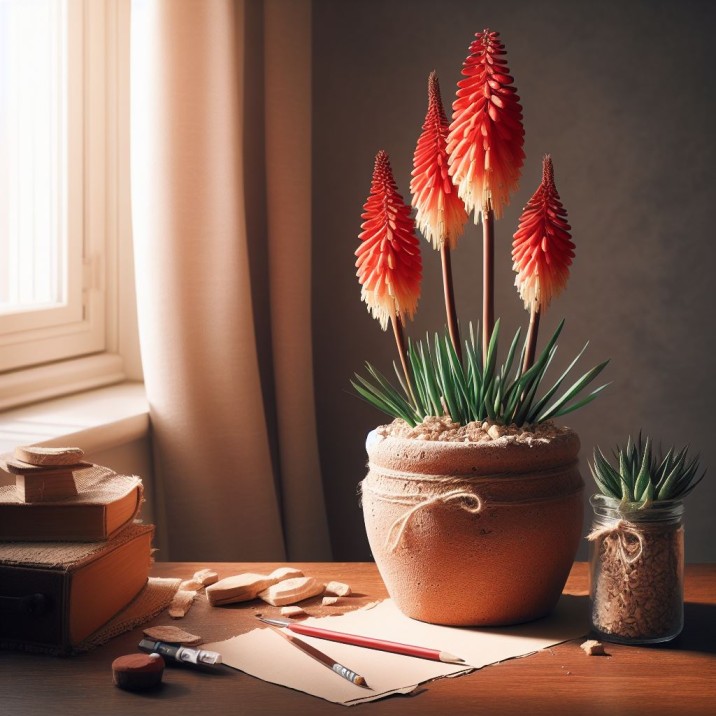
This plant is a useful addition to colorful winter landscaping because of its unusual, torch-like blossoms, which provide a blazing show in the winter garden. This is best Indoor Plants for Winter.
| Common Name | Scientific Name | Origin | Temperature | Humidity |
| Red Hot Poker | Kniphofia | South Africa | 20°F to 30°F (-6°C to -1°C) | Low to Moderate |
Hellebore (Helleborus)
The popular winter perennial hellebore, technically called as Helleborus, is a native of Europe. Its extraordinary resistance to cold enables it to flourish throughout the frigid season when most other plants go dormant.

Its graceful, drooping blooms, which come in a variety of colours, provide colour to winter gardens.
| Common Name | Scientific Name | Origin | Temperature | Humidity |
| Hellebore | Helleborus | Europe | 10°F to 20°F (-12°C to -6°C) | Low to Moderate |
Primrose (Primula)
A wonderful winter-blooming plant with a long history in the Northern Hemisphere is the primrose or Primula.
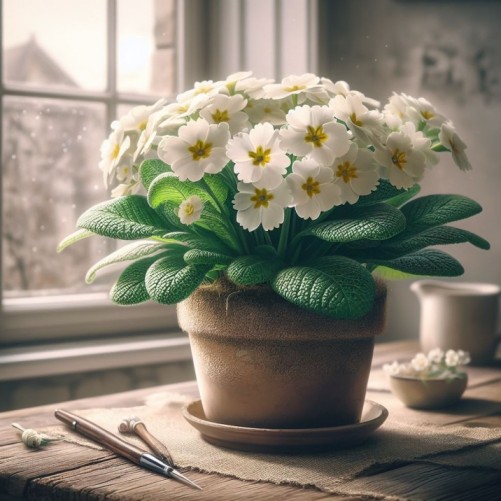
It is a fantastic addition to winter gardening, thriving in chilly climates and enhancing your surroundings with brilliant colors and aroma. This is best Indoor Plants for Winter.
| Common Name | Scientific Name | Origin | Temperature | Humidity |
| Primrose | Primula | Northern Hemisphere | 32°F to 50°F (0°C to 10°C) | High |
Peace Lily (Spathiphyllum):
Spathiphyllum, often known as peace lilies, are common indoor plants that are native to the tropical areas of Central and South America. These beautiful plants tolerate neglect and do well in dim light.
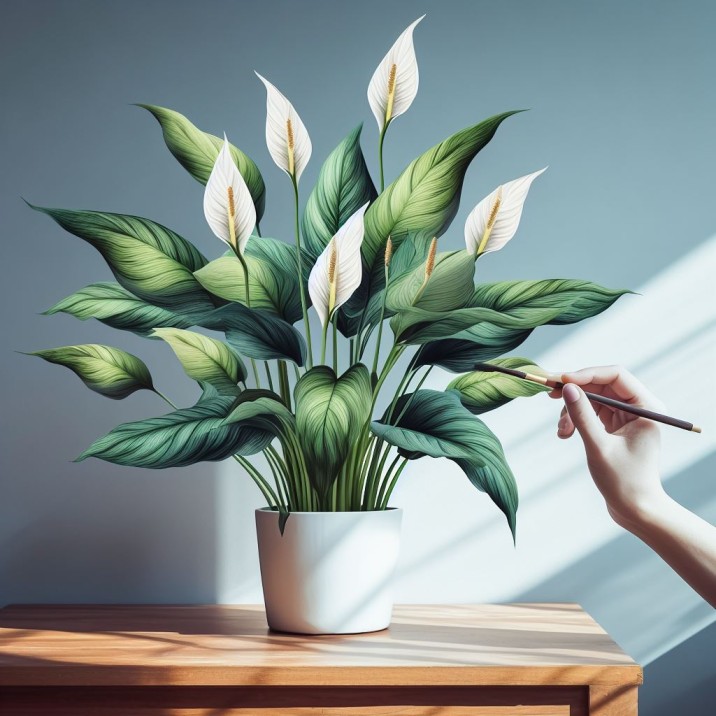
Peace lilies are great air purifiers because of their lush green foliage and beautiful white flowers, which take out pollutants and add moisture to indoor air.
They like temperatures of 65 to 80 °F (18 to 27 °C) and humidity levels of 40 to 50 %. This is best Indoor Plants for Winter.
| Common Name | Peace Lily |
| Scientific Name | Spathiphyllum |
| Origin | Central and South America |
| Temperature | 65-80°F (18-27°C) |
| Humidity | 40-50% |
Croton
The vivid indoor plant known as croton, or Codiaeum variegatum as it is named technically, hails from Southeast Asia and the Pacific Islands. It is prized for its striking foliage, which has a variety of colours. Croton is a great choice for improving indoor air quality because it enjoys warm temperatures and high humidity.
Common Name: Croton Scientific Name: Codiaeum variegatum Origin: Southeast Asia, Pacific Islands Temperature: 70-80°F (21-27°C) Humidity: High
Guideline for Indoor Plants for Winter
As the chill of winter settles in, it’s essential to think about the well-being of your indoor plants. Indoor plants for winter are your green companions during the cold months. Whether you have house plants for winter in Canada or are simply preparing indoor plants for the season, ensuring their care is crucial.
To help them thrive, provide adequate indoor plants with winter light and consider using grow lights for indoor plants during winter. While some indoor plants may struggle and become indoor plants dying in winter, others are hardy and survive. The best indoor plants for winter include those that can thrive in the lower light conditions of the season.
Caring for indoor plants during winter may involve adjusting humidity levels and temperature. In countries like India, where the winter season is milder, indoor plants for the winter season may differ, but the care and attention they require are equally important.
It’s a challenge to bring plants indoors for winter, but with proper preparation and the right indoor plants, you can enjoy a thriving indoor garden, even during the coldest months.
Indoor Plant Care in Diverse Climates: Pakistan to Canada
For those in Pakistan, dealing with indoor plants in the rainy season or winter can be a unique experience. Indoor plants in Pakistan face different conditions, and indoor plants in Lahore, Islamabad, or other cities may have distinct needs.
If you’re thinking of adding more indoor plants to your collection, indoor plants for sale in Islamabad or Lahore are readily available, with indoor plants in Pakistan with names to suit your preferences. With the right care, you can enjoy a flourishing indoor garden, whether it’s during the rainy season or the chill of winter.
Don’t forget to consider the ideal humidity for indoor plants in winter to keep them thriving. Houseplants for winter in Pakistan offer a touch of green in your home, even when the outdoor world is less inviting.
So, whether it’s indoor plants in Pakistan, Canada, or any other location, keeping your green friends happy during the winter season is a rewarding and refreshing experience.
FAQs
What are some indoor plants that thrive during the winter?
Some indoor plants that thrive during the winter include Peace Lilies, Snake Plants, and Pothos.
How can I provide adequate light to my indoor plants during the winter months?
You may give your plants enough light by positioning them close to a source of indirect sunlight or by utilizing grow lights made especially for indoor plants.
Why is indoor plant care important during the winter season?
Indoor plant care is crucial during winter to maintain indoor air quality, as well as to provide a source of greenery and improve mood in the often gray and cold months.
Do indoor plants need different potting sizes during the winter?
During the winter, indoor plants may not require various potting sizes, but it is crucial for their general health to provide enough room for root development.
What are the benefits of growing indoor plants during the winter?
The advantages include better indoor air quality, improved decor, and a fulfilling and controllable activity that can make your home seem cheerier even when it’s chilly and rainy outside.


